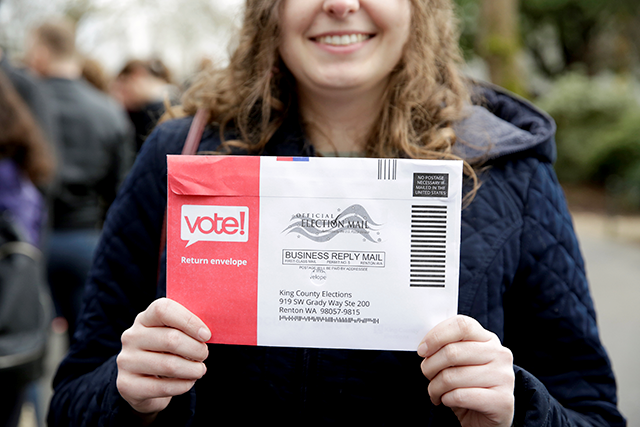With less than one month to go for the US elections, the debate around the election process itself resurfaces as well. Due to Covid-19, the mail-in voting process will be used increasingly, as a substitute to official polling booths. The 150-year-old postal voting process has become a political issue, Trump claimed that the process will lead to fraudulent votes, while Democrats claim that Trump has deliberately ruined the public trust in the electoral process.
Transparency and public trust are essential to elections. Voting can range from paper-based systems up to voting via direct electronic systems, voting via protected public networks or voting online. While the US debates about the mail-in voting scheme, other countries are slightly further with digitalizing elections. Estonia, widely known for its digital focus, had its first legally binding election via internet in 2005. In the parliamentary elections of 2019, 43.8% of all Estonian voters voted via the same online system.
While digital elections make discussions about mail-in voters superfluous, criticism of the electronic counterpart prevails in many countries. One of the biggest critiques, is that such online electronic election systems can be hacked in multiple ways through trojan horses invading voters’ computers, or through attacking the server that is used for the election process. Moreover, accessibility to the voting process by people who are not immediately digital natives should not be disputed.
The Dutch went digital with their elections in 1970 already. Since 1970, the Netherlands had used an electronic vote caster, which was not connected to any external device nor internet. Yet, in 2007, transparency and trust of the process was doubted by parliament, and the Dutch voters returned to using a red pencil and paper.
What do you think? Should elections become digital? To what extent? Under what conditions?
Relevant links:
https://www.kiesraad.nl/verkiezingen/tweede-kamer/stemmen/rood-potlood-en-elektronisch-stemmen


Hi Max,
thank you very much for your highly interesting post. I believe that the evolution to electronic voting is inevitable. Here is why: First, technologies of the next centuries such as blockchain will make digital voting significantly more secure. Second, electronic votings imply huge financial benefits as they consume less resources. Third, electronic voting will facilitate voting accessibility as it can be done from anywhere. I believe that these benefits will make electronic voting increasingly attractive and inevitable in the long-run, as these benefits will gain in importance in the future.
Kind regards,
Luis
Hi Max,
Thank you for your contribution. I liked your post. In my opinion, voting by ballot is outdated but for now necessary to save the democratic process. You already discussed the dangers of hacking. After the 2016 US presidential election, Russian interference in the election was a widely speculated topic.
However, I think the greatest danger is that voters are not certain if their vote will be counted. In a non-digital election, after you cast your vote the only thing that could influence your vote is human error, which is unlikely. In digital elections, after voting you cannot be certain that your vote will be counted after all your vote will be saved in a nonpublic database.
Donald Trump won the US presidential election mainly because of his surprising narrow victory in Wisconsin and Michigan. Some people argued that these states are most vulnerable to foreign interference since a small change could drastically change the electoral college result. Both states also allowed voting districts to have electronic voting. After profound research, researchers concluded that there was no statistical difference between electronic and non-electronic voting districts, therefore there was no evidence of interference (Mebane and Bernhard, 2017). However, there was no evidence either that there was no interference. This is pretty scary since there are numerous instances of electronic voting fraud in the past (Vox, 2018).
In my opinion, we should be cautious about digitalizing elections in the near future. We cannot guarantee that all electronic votes are casted in the US, let alone that other countries with less welfare and young democratic cultures can handle elections digitally.
References
Vox. 2018. US voting machines are failing. Here’s why. [Online]. [Accessed 6 October 2020]. Available from: https://www.youtube.com/watch?v=QTCmkIxve0c
Mebane, W.R and Bernhard, M. (2017). Were 2016 vote counts in Michigan and Wisconsin hacked? We double-checked. [Online]. [Accessed 6 October 2020]. Available from: https://www.washingtonpost.com/news/monkey-cage/wp/2017/06/06/were-2016-vote-counts-in-michigan-and-wisconsin-hacked-we-double-checked/